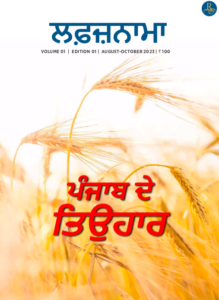Haiku Blossoms (8)

Monoku—The one-line haiku
Alan Summers suggests there is a white space, as though some words have been left unsaid in monoku which readers nevertheless divine. In conventional 3-line (s/l/s) English-language haiku, there is a single kireji, and the contrast of images is explicit. Monoku, however, may create multiple stops. It is worth mentioning that monoku are not run-of-the-mill sentences.
Jack Kerouac was the first to experiment with a single-line format in the 1950s. He has been followed by John Wills, M. Kettner, Jim Kacian, Janice Bostok, Chris Gordon, Scott Metz, Stuart Quine, John Barlow, and many others. William Higginson’s “Characteristics of monostichs” has enumerated the historical perspective of one-line haiku. Michael Segers in the early 1970s and subsequently Matsuo Allard and Marlene Mountain shaped the art of monoku writing in English.
Allan Burns in his Montage for the week of May 3, 2009 (and also as Gallery Three in Montage: The Book) writes:
“English-language haiku tend to be written in three lines, corresponding to the metrical division of Japanese haiku, but Japanese haiku are actually usually printed in a single vertical column. By way of analogy with this form, poets such Matsuo Allard and Marlene Mountain began writing English haiku in a single horizontal line—and thanks to their efforts that form has become established in English as the major alternative to the typical three-liner”.
Hiroaki Sato was the pioneer of translating Japanese haiku into one line in English. Mountain (formerly Wills) wrote collaborative linked one-line haiku sequences (known as Mountain Sonnets, each consisting of 14 one-line haiku).
The beautiful definition quoted in Whiptail Journal, a journal devoted to the single-line poem (Editors: Kat Lehmann and Robin Smith) is as under:
“Unlike poetry with line breaks, single-line poetry does not rely on physical enjambment to enhance the meaning of the poem. As such, one-line poetry can have more than one break in syntax to create multiple meanings. Single-line poetry can be a slippery lizard or a long-necked swan.”
Some of the memorable examples of one-line haiku:
A dandelion seed floats above the marsh grass with the mosquitos.
Allen Ginsberg, “Following haiku”, White Shroud: Poems 1980–1985
in the eggshell after the chick has hatched
Michael Segers, Haiku Magazine, 1971
a dixie cup floats down the Nile.
Cor Van den Heuvel, EO7, 1964
old woodcutter rests on the rings of the oak
Marlene Mountain, the old tin roof, 1976
an icicle the moon drifting through it
Matsuo Allard, Bird Day Afternoon, 1978
cry of the peacock widens the crack in the adobe wall
Elizabeth Searle Lamb, Harold G. Henderson Haiku Awards 1981
my head in the clouds in the lake
Ruby Spriggs, Frogpond 6:2, 14
Some star or other went out, and you, thank you for your book and year
John Ashbery, “37 Haiku”, 1984
Kind of Blue the smell of rain
Allan Burns, Acorn 20, 2008
stone before stone Buddha,
Schooner bearing away the sun in its arms
Emmanuel Lochac, Monostiches, 1929
pig and i spring rain
Marlene Mountain, Frogpond 2.3-4, 1979
the thyme-scented morning lizard’s tongue flicking out
Martin Lucas, Presence 39, 2009
i hope i’m right where the river ice ends
Jim Kacian, Frogpond 35.2, 2012
in the dark of the kitchen with the fridge door open winter solstice
Oliver Schopfer, Under the Basho, 2015
envelope my thumb slips open the seal of his tongue
Janice M. Bostok, Amongst the Graffiti: Collected Haiku and Senryu 1972-
2002 (2005)
dusk from rock to rock a waterthrush
John Wills, The Haiku Anthology (Ed. Cor Van Den Heuvel) 2000
Techniques of Monoku Writing
William J. Higginson, Jim Kacian, Alan Summers, Jacob Salzer, and others have broadly dealt with the techniques and styles of monoku writing. Artful placement of words, creating multiple options by the use of the word as verb and noun, sometimes avoiding the use of verb and expressing in condensed form, and resonating multiple meanings with more than one pause (kireji) are just some of the most common techniques. The poetic use of the images, juxtaposing images of nature and the sense of human behavior, etc constitute the art of monoku
expression.
Abruptive Technique, as suggested by Alan Summers, is a term for sharp changes in directing the reader. It is one method for breaking up normal syntax/semantics. Summers writes, “Whether the author wants these monoku read rapidly or a little slower, we touch on just some of those where velocity with quality of language as sound, not just meaning and content, can play its part, and produce from velocity and quality something I will call veloquality. Does one-line haiku echo the one line image of the fragment/section and phrasal (two-line imagery) sections that creates sparks, bringing together an altogether different and extra overall image? Or does it do something different to the technique of juxtaposing imagery? Above all it’s the invisible text that counts as much as the visible text, as a catalyst for everything, including the vertical layers of alternative, additional, and complementary meanings from the horizontal surface meaning.”
The broad techniques of monoku writing such as haiku in one-breath, classic style of one-line haiku and one-line haiku with classic multiple meanings have been described by William J. Higginson.
I. Haiku in One-breath: The poem starts and finishes in one stroke without any pause or break in between (poetics of caesura). It has to have a vivid interplay of image and poetic sense. Otherwise, it would appear more like a sentence or a prosaic expression. Jim Kacian’s Where I Leave Off is both a collection of and a primer on the writing of, one-line haiku (as well as one-line haibun!). Kacian illustrates: “One-line one-thought”:
“Rather than a piling up of images upon the imagination, a single image is extended or elaborated into a second context, stated or implied.”
Similarly, Jim Wilson describes, “What distinguishes the monoku from the haiku is that the single line of the monoku has no breaks; it just goes from the first to last syllable.” The monoku is instead one “complex statement with overlapping parts forming a complex whole.”
crow caw shatters the silence between composers
Janice M. Bostok, Amongst the Graffiti, 2003
snow on the sun navigating childhoods
Alan Summers, Yanty’s Butterfly Haiku Nook: An Anthology, 2016
Regarding the single image concept of his own monoku, Cor van den Heuvel in My Haiku Path’, writes that he tried to find another element to resonate with–
‘the shadow in the folded napkin’
but “finally decided, with the encouragement of Anita Virgil, that the image could stand alone. It didn’t need anything else”. He writes “I began to think of one-image and one-line haiku as a part of my approach to haiku. There is almost always something else in the experience of the reader that will resonate, if only sub-consciously, with a single image-if that image is striking and evocative enough. One may think of it as an invisible metaphor.”
Commenting on the above one-line of Cor van den Heuvel, Robert Gilbert writes: “It seems van den Heuvel’s “the shadow in the folded napkin” hovers in its own shadow: as though the text shadows its representation–imagistic fusion combines with one-line brevity to create a sense of insubstantiality in the read text.”
II. Classic Style of One-line Haiku: Here the expression follows the classic internal rhythm pattern with three phrases. It allows, unlike the three-line pattern of haiku, to be expressed all in one breath.
i open the door darkness letting in a strange moth
Matsuo-Allard, Bird Day Afternoon, 1978
Higginson comments: “A quick first reading suggests isolating " darkness " as the object encountered when the door is opened, intervening between the actions of opening the door and letting in the moth. But a haiku reading, sensitive to the normal short-long-short rhythm of a classical haiku, reforms the center of the poem as ‘darkness [is] letting —an action that certainly increases the strangeness of that moth and the poem’s chill.”
III. One-line Haiku with Classic Multiple Meanings: This style embodies the surrealistic beauty of monoku writing. It is written in such an artistic way, it exhibits different meanings when read in different ways. This is perhaps unique in one-line writing with the liberty of white space facilitating a reader to evolve different interpretations by switching the different syntactic elements (multiple stops as defined in Kacian). The poem depicts different meanings and it is the real beauty of this style of monoku writing.
A haiku, with fragment and phrases having formal line breaks, can not be simply written in an unbroken format or one-liner. Johannes S. H. Bjerg says the “one-line haiku seems to be a discipline of its own. What I have discovered is that it represents another way of thinking, perceiving (sensing), of “speaking” than a three-line haiku and often with more energy in it as it’s even more condensed in thought and sensing than a three-line verse.” Johannes as Editor of “Under the Basho” selected this monoku of mine for publicaton:
crawling through the weight a baby snail
Neena Singh, Under the Basho, 3rd September 2020
It is interesting to note how a one-liner can be characterized by multiple breaks as exemplified in the below analysis of Hla Yin Mon’s poem by Kat Lehmann and Robin Smith in their article, “ Haiku: Walking the Fine Line.” Kat Lehmann and Robin Smith enumerated with an explanation: “The different readings of the poem can add new depth or dimension, add meanings, extend, or juxtapose one another to create several interrelated poems. The result can enhance the reader’s enjoyment and be quite magical.”
frog inside the bamboo so tiny the moon
Hla Yin Mon, whiptail, Issue 1, 2021
frog inside the bamboo so tiny / the moon (emphasis on the moon)
frog inside the bamboo / so tiny the moon (emphasis on the moon’s smallness)
frog / inside the bamboo / so tiny the moon (relation between frog and moon)
frog inside / the bamboo so tiny / the moon (location of frog)
frog / inside the bamboo / so tiny / the moon ( chopped meaning and broken cadence)
Similarly, the following monoku can be interpreted in more than one way by
introducing multiple pauses or kireji in between.
no moon last night I remembered you are gone
Jim Wilson, Shaping Words Blog, 19 July 2010
shadows darkening three-sevenths of her face in sunlight
Elizabeth Searle Lamb, in this blaze of sun, 1975
the zero-shadow moment I am with myself
Pravat Kumar Padhy, The Heron’s Nest Vol. XXI, Number 3, 2019
There are a few other methods generally followed to write monoku. They are as follows:
Word Arrangement: This is a technique of one-line haiku, more of with the mere close flow of writing of words. It appears as if a single word by way of overlapping the words embodies the poetic spell.
s p a c e d o u t o v e r t h e e s c a r p m e n t t h e s t a r s
Rafal Zabratynski, 16th International Kusamakura Haiku competition, 2011
Jampackedelevatoreverybuttonpu
John Stevenson, Frogpond 25:2, 2002
Broken Monoku: Ichthys has composed haiku, essentially, in two lines and is referred to as ‘Broken monoku’. The monoku is expressed in two lines with a break or caesura in between. The following is a line expression with a single pause with characteristic juxtaposition.
footsteps in the street –
echos of a distant youth
Monoku Blog, 31 Dec 2007















